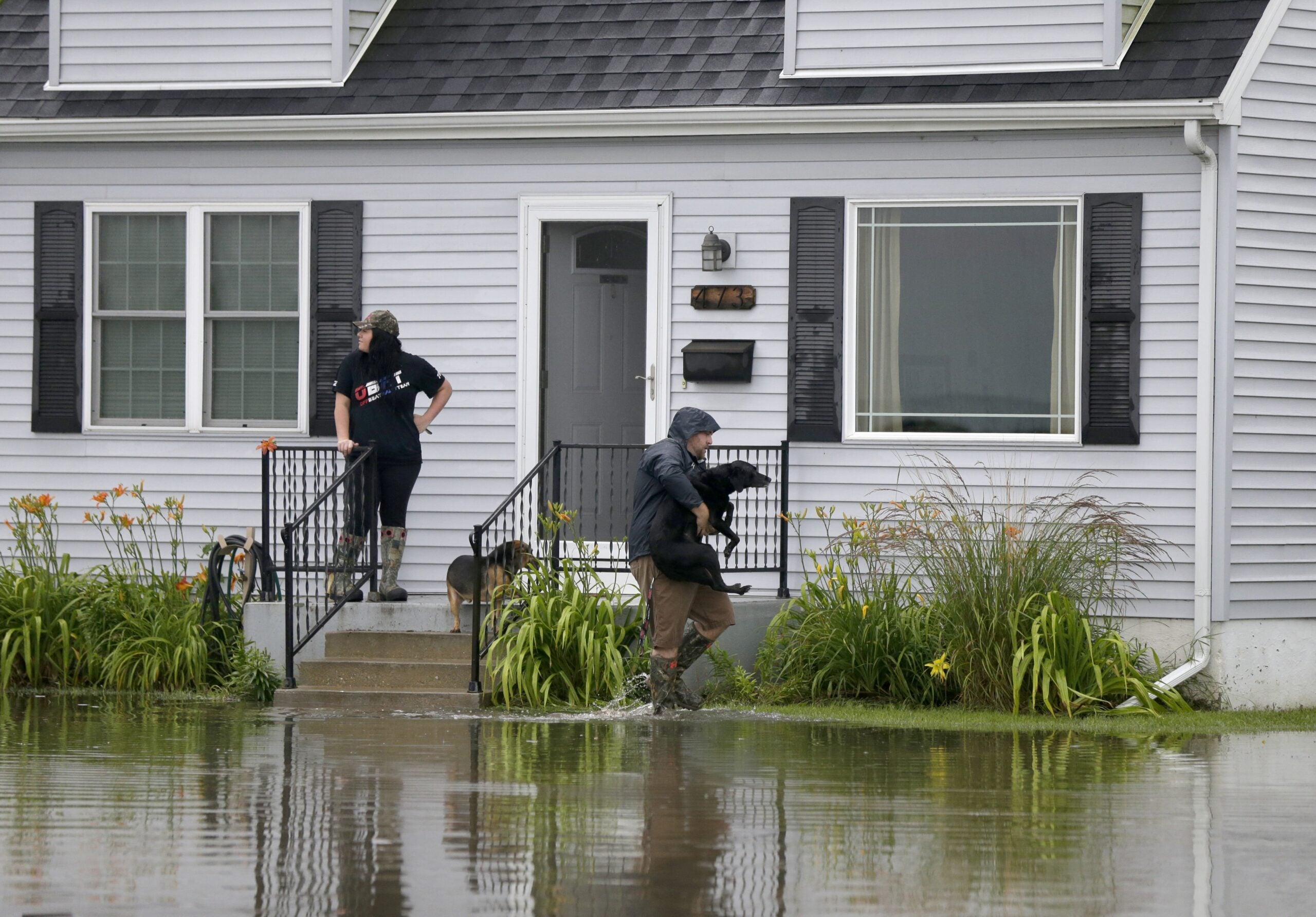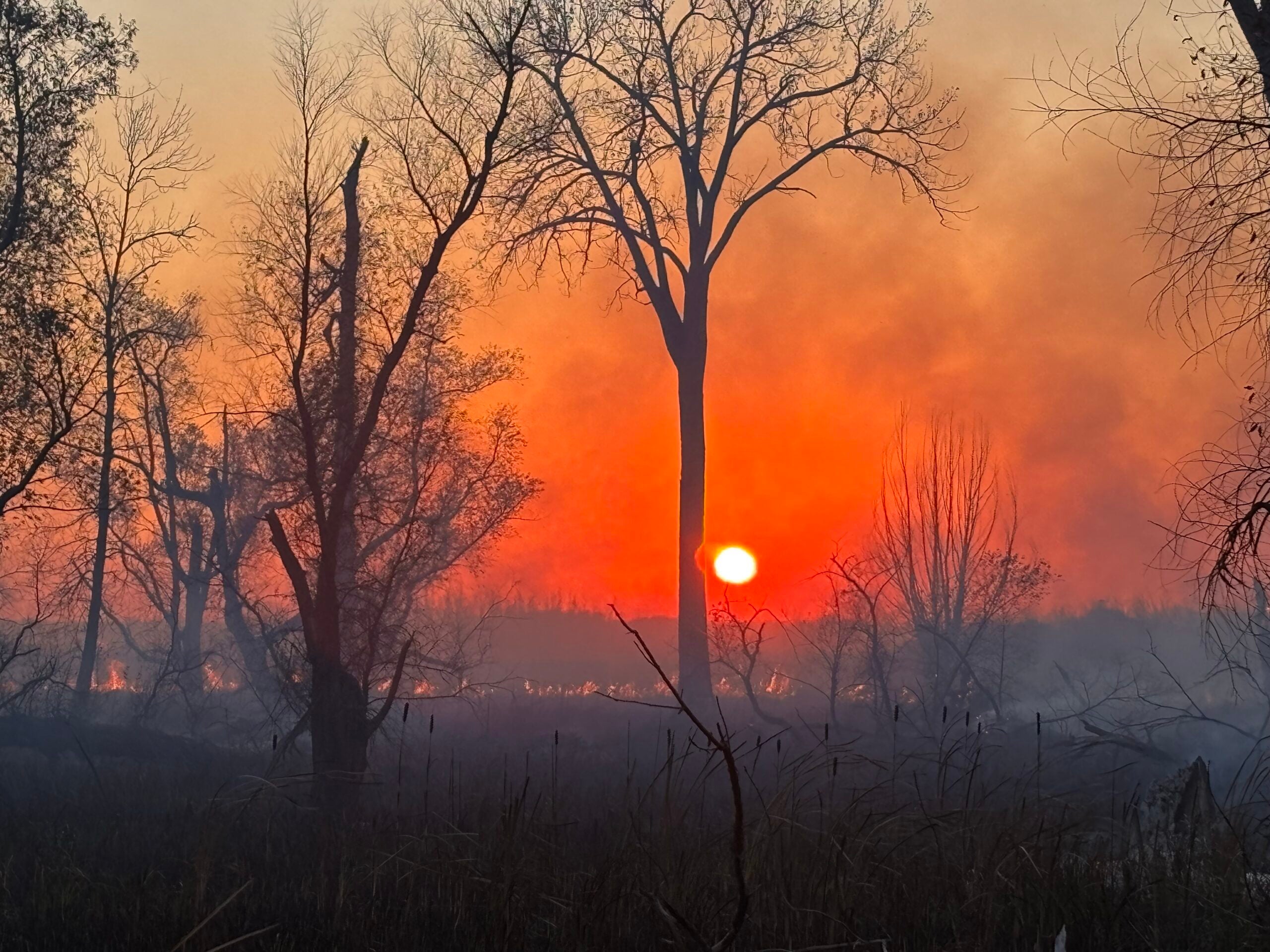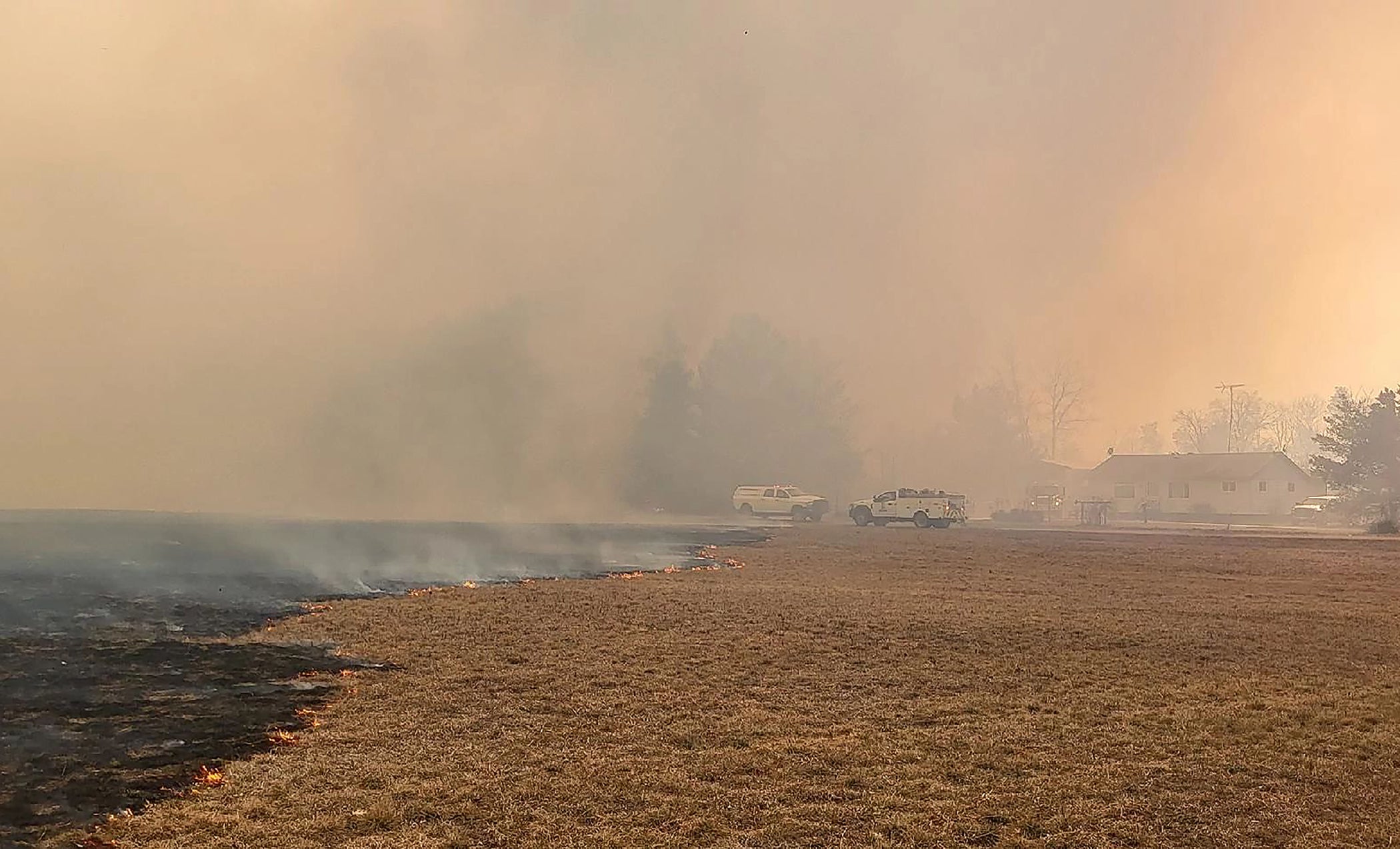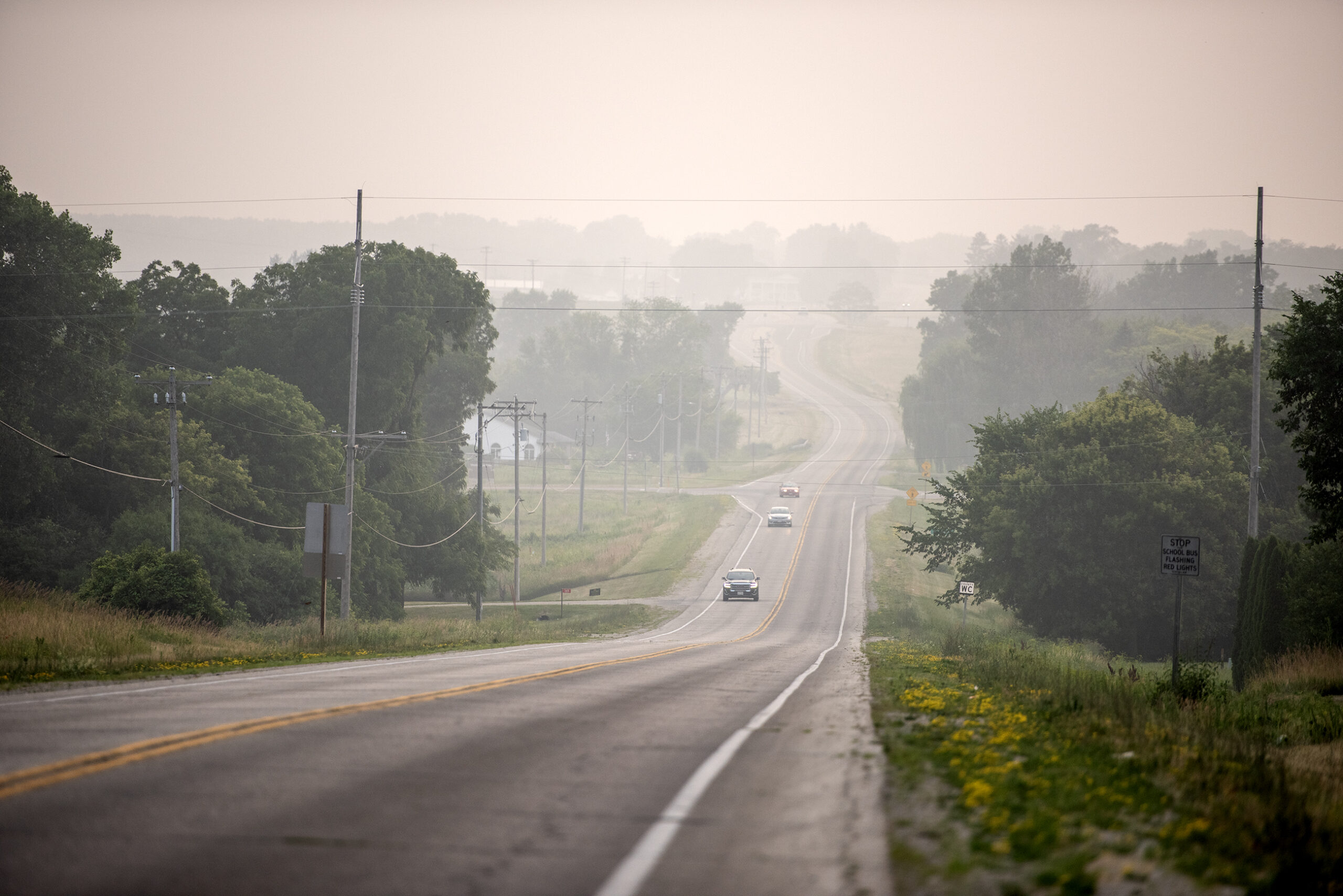Wisconsin’s fire season — which typically runs from the time the snow cover melts to when foliage turns green — will likely be extended this year due to continued cooler temperatures slowing down vegetation growth.
Northern Wisconsin in particular will likely have a fire season that lasts beyond its typical end date of Memorial Day, said Catherine Koele, wildfire prevention specialist for the state Department of Natural Resources.
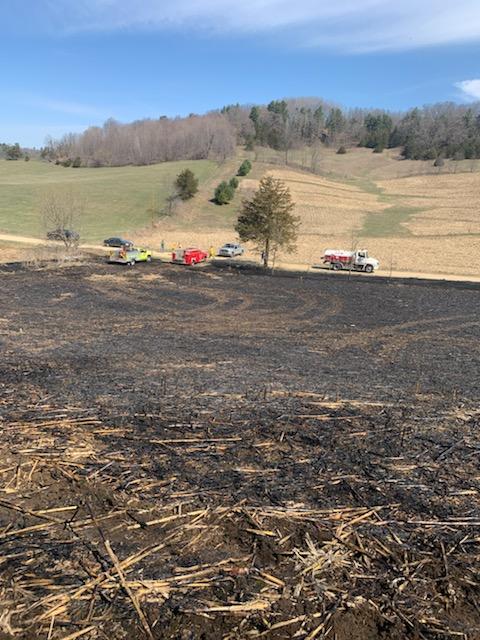
Stay informed on the latest news
Sign up for WPR’s email newsletter.
Last weekend, a majority of counties in Wisconsin were under a high or very high fire risk, and there were 16 fires reported on Saturday across DNR protection areas. So far this year, Wisconsin has seen a total of 327 wildfires.
“The fire danger is pretty elevated in the northern half, particularly in the sandy soils and the pine areas,” Koele said.
Most wildfires in Wisconsin are caused by debris burning — an event that often happens in the springtime to coincide with spring cleaning and in parts of Wisconsin’s densely-forested areas that require a burning permit.
Koele said there’s a two-step process to burning debris: getting a permit, and figuring out if that permit is valid. Because of the high fire risk now, burning permits aren’t being issued, nor are they effective until the fire ban lifts.
Burning materials requires a permit all year long in much of the northern part of Wisconsin within DNR forest fire protection areas. The requirements loosen in parts of central Wisconsin, and no permits are needed for counties generally in the west and eastern parts of the state.
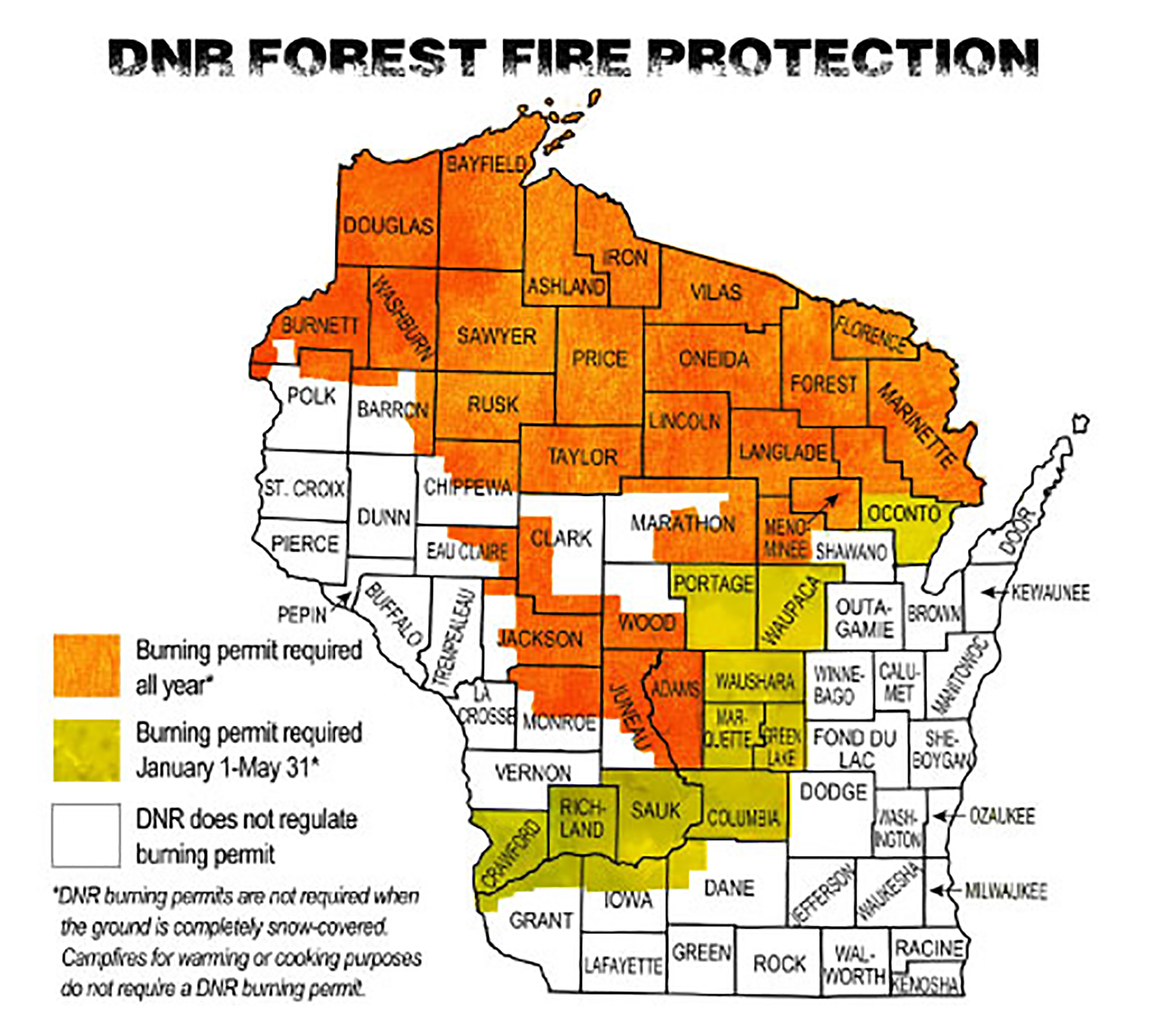
Materials that can be burned include brush, leaves, pine needles, grass, clean wood and nonrecyclable paper and cardboard. Illegal materials that shouldn’t be burned include garbage, plastics, shingles, foam, furniture, wire, metal, electronics, rubber, vinyl- and oil-based products, and painted, stained or treated wood.
For legal, burnable items, Koele said treat them like a haircut.
“A couple of us could probably use some haircuts right now. It’s unsightly,” she said. “Debris piles in the yard are probably unsightly. But we can live without burning those. If folks could just wait until things are a little bit safer … that would really help everybody.”
Burning permits aren’t needed when the ground is completely covered in snow. Campfires for warming or cooking also do not require a DNR permit, though these activities are discouraged because of the heightened risk. The only time campfires and warming fires are banned is when emergency burning restrictions are in place.
Koele said the permit suspensions are a result of high fire risk. But they’ve also been implemented because of COVID-19, in part to ensure that emergency responders aren’t unnecessarily exposed to COVID-19 and are available when needed.
Koele said the department took a proactive approach to dealing with the COVID-19 pandemic, which included developing a wildlife response plan and suspension of prescribed fires. The DNR also has four single engine air tankers scattered in high fire danger areas across the state and has access to the U.S. Army National Guard Blackhawk helicopters with bucket capabilities.
Koele said she’s grateful for the public compliance she’s seen in her 20 years with DNR wildfire prevention.
“We’re all in this together,” she said. “People understand the risks, and we’re just grateful.”
Wisconsin Public Radio, © Copyright 2025, Board of Regents of the University of Wisconsin System and Wisconsin Educational Communications Board.

